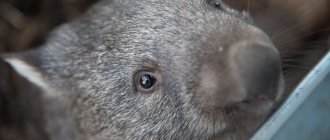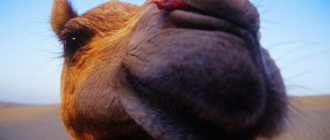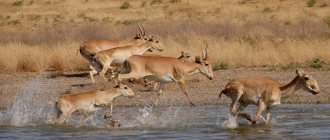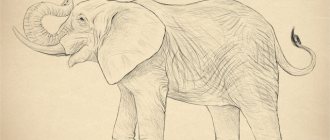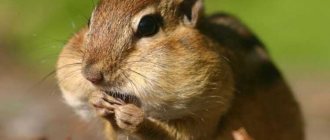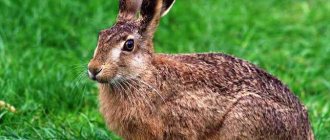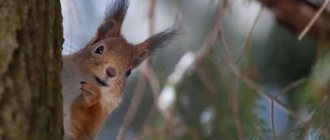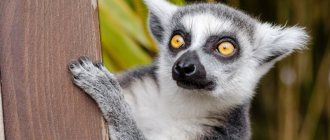Home page Wildlife Animal world
88 172 4.27 6
When scientists discovered the platypus in Australia, the very fact of its existence dealt a fatal blow to the theory of evolution: only the Lord God could definitely have created such an unusual creature in every sense.
The nose of this amazing animal surprisingly strongly resembled the beak of a duck (hence the name), and on each foot it had five toes connected by webbed toes. The creature's paws, like those of a reptile, were located on the sides, and spurs were found on the hind legs, like those of a rooster.
The tail of the animal was not much different from the tail of a beaver, and it also turned out that it carried eggs and was capable of poisoning an enemy with its own poison! And this is not a complete list of the amazing features of the animal, which is an unofficial symbol of the Australian continent and is depicted on a twenty-cent coin.
Little animal unknown
Scientists who first studied the platypus considered themselves victims of deception. At first glance, the animal looked like a mishmash of animal pieces stitched together: the paddle-shaped tail of a beaver, the smooth body of a mole, the thick fur of an otter, the wide flat beak of a duck, small round eyes and the large webbed feet of a pelican. The body of the platypus is mostly brown, the belly is slightly lighter, and the fur under the eyes is white.
Photo: AMNH/ R. Mickens
History of the study
Ever since scientists discovered the beak-nosed platypus in 1797, it has become evolution's mortal enemy. When this amazing animal was sent to England, scientists thought it was a fake made by Chinese taxidermiers. At that time, these craftsmen were famous for connecting different parts of the body of animals and making unusual stuffed animals. After the platypus was discovered, George Shaw introduced it to the public as Platypus anatinus (translated as flat-footed duck). This name did not last long, as another scientist Johann Friedrich Blumenbach changed it to “paradoxical bird's beak”, or Ornithorhynchus paradoxus (translated as paradoxical bird's beak). After much debate between the two scientists over the name of this animal, they finally came to an agreement and decided to call it Ornithorhynchus anatinus.
Taxonomists were forced to classify the platypus as a separate order because it did not belong to any other order. Robert W. Feid explains it this way: “The platypus's nose is like a duck's beak. Each foot has not only five toes, but also webs, making the platypus something of a cross between a duck and an animal that can burrow and dig. Unlike most mammals, the platypus's limbs are short and parallel to the ground. Externally, the ear looks like an opening without the pinna, which is usually present in mammals. The eyes are small. The platypus is an animal that is nocturnal. It catches food underwater and stores a supply of food, i.e. worms, snails, larvae and other worms like squirrels in special bags that are located behind his cheeks"
There is a humorous parable according to which the Lord, having created the animal world, discovered the remains of “building material”, collected them together and connected them: a duck’s nose, a beaver’s tail, rooster spurs, webbed feet, sharp claws, thick short fur, cheek pouches, etc. .d.
Platypus populations vary greatly in size
Typically, the body size of individuals increases with increasing latitude. Thus, platypuses are smaller in the northern regions of Australia and larger in the southern regions of the country. For example, a large male platypus in Tasmania can weigh three times more than the average male in the northern population.
In general, males are larger than females and can be up to 16% longer and up to 40% heavier. In males, the body length from the tip of the beak to the tip of the tail is from 40 to 63 cm, in females - from 37 to 55 cm. The body weight of males does not exceed 3 kg, females can weigh up to 1.7 kg.
Determination of gender
In 2004, scientists from the Australian National University in Canberra discovered that the platypus has 10 sex chromosomes, rather than two (XY) like most mammals. Accordingly, the combination XXXXXXXXXXX produces a female, and XYXYXYXYXY produces a male. All sex chromosomes are connected into a single complex, which behaves as a single whole in meiosis. Therefore, males produce sperm with chains XXXXX and YYYYY. When sperm XXXXX fertilizes an egg, female platypuses are born if the sperm
YYYYY – male platypuses. Although the platypus chromosome X1 has 11 genes that are found on all X chromosomes in mammals, and chromosome X5 has a gene called DMRT1 found on the Z chromosome in birds, being the key sex-determining gene in birds, overall genomic studies have shown that five sex The X chromosome of the platypus is homologous to the Z chromosome of birds. The platypus does not have the SRY gene (a key gene for sex determination in mammals). It is characterized by incomplete dosage compensation, recently described in birds. Apparently, the mechanism for determining the sex of the platypus is similar to that of its reptilian ancestors.
Platypuses lead a freshwater lifestyle
The ideal habitat is freshwater with stable earthen banks supported by the roots of native riparian vegetation overhanging the water. Platypuses can also be found in shallow lakes, artificial water sources such as reservoirs, weirs, ponds and farm dams. They sometimes dive into brackish water areas of river mouths, but mostly remain in freshwater areas.
Adult male platypuses have a large home range, sometimes exceeding 15 km! Moreover, the male can cover over 10 km in one night. Females tend to hunt closer to home and their range is usually less than 4.5 km.
Where does the platypus live?
The natural habitat of the platypus is the eastern part of Australia and the island of Tasmania. Probably, small populations lived in the central and western parts of the continent, but today it is generally accepted that the species has completely disappeared in these areas.
Where do platypuses live?
Diagram of a hole with two entrances
The usual habitat of the platypus is the coastal zone of fresh water bodies. The animal chooses a steep bank with vegetation to build its home. Platypuses dig long burrows with a camera. The habitat has two exits: one of them is below the water level, and the second is at a height of at least a meter above the water. To camouflage their homes, platypuses arrange entrances to their homes in the roots of trees, in dense thickets of bushes or algae.
Fur for all occasions
Although the platypus' range covers only one small area of the world, it is able to withstand a variety of climate extremes, from hot plateaus and rainforests to the cold mountainous regions of Tasmania and the Australian Alps. Its thick fur provides excellent insulation both in water and outdoors.
Photo: worldswildlifewonders/Shutterstock
The average body temperature of a platypus is about 32 °C, while that of most placental mammals is 37 °C. The platypus is able to maintain an average temperature even after spending many hours in water below 4 °C. Brrr!
Platypus fur is waterproof and retains the insulating layer of air needed to maintain a stable body temperature in cold water. Long guard hairs protect the thick fur from water, so it remains dry even when the animal is in the water for several hours.
Relationships with people
While in nature this animal has few enemies (sometimes it is attacked by a python, a crocodile, a bird of prey, a monitor lizard, a fox, or a accidentally swam seal), at the beginning of the last century it found itself on the verge of extinction. The hundred-year hunt did its job and destroyed almost everyone: products made from platypus fur turned out to be so popular that poachers had no mercy (about 65 skins are needed to sew one fur coat).
The situation turned out to be so critical that already at the beginning of the last century, hunting for platypuses was completely prohibited. The measures were successful: now the population is quite stable and is not in danger, and the animals themselves, being indigenous to Australia and refusing to breed on other continents, are considered a symbol of the continent and are even depicted on one of the coins.
Platypuses are excellent swimmers and divers
Despite the fact that platypuses stomp somewhat clumsily on land, in the water they look like sleek, high-speed rockets. Large webbed feet help them swim quickly through the water, and their plump paddle-shaped tail serves as a stabilizer while swimming. It also stores extra fat, which can be used to replenish energy reserves. Its hind legs serve as steering wheels and brakes.
Platypuses can make repeated short dives of 30 to 60 seconds, although they can remain underwater for up to 2 minutes. The time and depth of the dive depend on the amount of air in the lungs. Platypuses typically dive to depths of less than 5 meters, although they sometimes dive to greater depths of up to about 8 meters. After diving, the animals float to the surface to restore breathing, and after 10-20 seconds they plunge back into the water.
What does the platypus eat?
With booty
Most of the platypus' diet consists of mollusks, crustaceans, invertebrates, and insects that live on the bottom and in the upper layer of silt. It dives to the bottom, breaks the mud with its paws or nose and looks for prey. When there is a shortage of animal food, the platypus can feed on aquatic vegetation.
The lower part of the beak has narrow channels resembling a sieve, which allows the platypus to strain the food it has caught, which it then hides in its cheek pouches. After diving, it emerges to the surface and remains there for some time, grinding the food collected in its mouth with the help of horny plates and teeth located in the oral cavity.
The platypus eats a lot: per day it consumes an amount of food equal to a quarter of its own weight.
Shellfish have no chance of escaping from the platypus
His signature duck nose is actually soft and pliable, and not at all hard like a duck's beak. It is dark in color, almost black in contrast to its chocolate coat. The platypus's bizarre-looking beak has up to 40,000 receptors that respond to stimuli such as touch, pressure, sound waves and movement.
Photo: www.dw.com
When the platypus is underwater, its eyes and ears are closed, so it only has to rely on the receptors in its nose. They help the animal navigate the dark underwater depths and detect even the slightest electrical impulses generated by the movements of mollusks or insects. Moving its head back and forth, the platypus finds prey, determines the distance to it and quickly approaches the victim.
Platypuses have no teeth
Platypuses (and echidnas) do not have teeth, but instead grind food with keratinous mouth pads that are replaced regularly throughout life. Due to the lack of teeth, the platypus needs to collect pieces of gravel along with its food to help chew its food. The animal swallows the soft parts of its prey and spits out its chitinous exoskeletons.
Notably, hatchling platypuses have “baby teeth,” similar to molars, but they fall out around the time the young leave the burrow to nest.
What does it look like
The platypus (photo of the animal is presented below) is a small animal. The length of its body does not exceed 30, sometimes 40 cm. The tail and beak of the animal deserve special attention. And if the first in many ways resembles the tail of a beaver, then the second has much in common with the beak of an ordinary duck, which was the reason for the platypus receiving its own name.
The tail is flat, covered with hair in young animals, and hairless in old animals (the hair falls out over time). Fat reserves are deposited in the animal's tail, which help preserve life during periods of food shortage. The body is covered with thick, very soft fur of a dark brown shade. The abdomen is light brown or red.
Beak
The front part of the platypus's head is extended forward, gradually turning into a flat beak. The head is round in shape and small in size. The width of the beak is 5 cm, the length is 6.5 cm. It is in many ways similar to a duck’s, but unlike it, it is not represented by hard plates, but by 2 soft bones, covered with thin, well-stretchable skin.
The platypus has cheek pouches, they seem to expand the oral cavity and serve to store food reserves. In the lower part of the beak, males have a special gland that secretes a secretion that emits an unpleasant musky aroma. Young animals have teeth - only 8. They are fragile, quickly wear out and soon turn into keratinized plates.
Closer to the eyes, there are 2 nasal openings on the beak. The surface of the beak contains nerve endings, giving the animal the ability to use electrolocation. It turns its head to detect weak signals of radiation from future prey, such as crayfish. Although the echidna has similar receptors, it does not use them when searching for food.
Description of the platypus:
| Platypus | Body parameters | |
| Beak | Length, cm | 6,5 |
| Width, cm | 5 | |
| Tail, cm | 10-15 | |
| Torso, cm | 30-40 | |
Animal venom
The platypus (a photo of the animal and its description can be found in reference books and guides to Australia), unlike many mammals, is poisonous. There are horny spurs on the hind legs of young animals of both sexes. In females that have reached one year of age, they disappear, but in males they remain, reaching a length of 1.2-1.5 cm.
On the eve of mating, the male's femoral gland begins to produce poison, which enters the spur and turns the animal's hind legs into a deadly weapon.
During the rutting period, platypuses inflict many blows on each other, trying to scratch the enemy with the claws of their hind legs. In this case, the enemy dies from severe painful shock. Platypus venom can kill dingoes. It does not pose a danger to humans, but severe swelling may form at the site of impact, and pain persists for several weeks and months.
Every day the platypus eats up to 20% of its mass
Underwater forays allow it to feed on insect larvae, worms, freshwater shrimp and Australian "yabby" crayfish. The animal places its prey in its cheek pouches and swims to land to feast on the caught food.
Photo: www.medicalnewstoday.com
Every day the platypus spends about 12 hours searching for food. Due to its somewhat limited ability to hold its breath, the platypus feeds in shallower lakes and reservoirs at depths of 1 to 5 meters.
Platypuses hunt at night
The platypus is usually active at night and at dusk. It emerges from its burrow in the late afternoon to forage for food. By early morning he is ready to enter the hole again. One scientist found that platypuses in the state of Victoria in southeastern Australia spend between 11 and 17 hours in a burrow. A high-calorie diet of crustaceans allows platypuses to sleep soundly for up to 14 hours a day!
Interesting note: The platypus spends almost 60% of its daily sleep in deep, brain-active, REM sleep. By comparison, people spend about 25% of their sleep in this rich, REM state.
Origin of the species and description
Photo: Platypus
The animal belongs to the waterfowl mammals. Together with the echidnovas, it belongs to the order Monotremes. Today, only these animals are representatives of the duckbill family. Scientists note a number of characteristic features that unite them with reptiles.
The animal's skin was first discovered in Australia in 1797. At that time, researchers could not find an explanation of who this skin actually belonged to. Scientists even decided at first that it was some kind of joke, or perhaps it was created by Chinese scarecrow craftsmen. At that time, skilled craftsmen of this genre were able to fasten body parts of completely different animals.
Video: Platypus
As a result, amazing non-existent animals appeared. After the existence of this amazing animal was proven, researcher George Shaw described it as a flatfooted duck. However, a little later, another scientist Friedrich Blumenbach described him as a paradoxical bearer of a bird's beak. After much debate and striving to come to a consensus, the animal was given the name “duck-shaped bird-beak.”
With the advent of the platypus, all ideas about evolution were completely shattered. Scientists and researchers for almost three decades could not determine which class of animals to classify it into. In 1825 they assigned it to mammals. And only almost 60 years later it was found out that platypuses tend to lay eggs.
It has been scientifically proven that these animals are among the oldest on Earth. The oldest representative of this genus, discovered in Australia, dates back more than 100 million years. It was a small animal. It was nocturnal and could not lay eggs.
Platypuses are excellent diggers
The claws make it easier for the platypus to dig holes. Males and females dig simple shelters along rivers and streams outside the breeding season. They can also live under rock ledges, roots and debris. Such burrows are used by males and non-breeding females for resting.
Photo: Douglas Gimesy
Pregnant females dig a more complex and deep burrow with several rooms and entrances for nesting. Such a hole is called a nursery hole. When the female leaves her young alone, she covers the hole with a soft layer of earth and "garbage". Plugs are needed to protect against predators, rising water, or to regulate temperature/humidity in the burrow.
One of the few mammals that lay eggs
The platypus is a monotreme animal. While the vast majority of mammals are viviparous, platypuses (along with echidnas) lay eggs, incubate them, and feed their young with milk.
Females lay 1 to 3 eggs. Typically, the eggs are about 1.7 cm in diameter. They are more rounded than bird eggs. The shell is soft and pliable.
The female covers the nesting chamber with wet leaves, vegetation and branches, which she carries into the hole sandwiched between her hind legs and tail. Securely locked from the inside, the female keeps the eggs between her rump and tail to keep them from freezing. The female leaves the burrow only for defecation and moistening the fur.
Other interesting facts
- The average lifespan of platypuses is 10 years .
- They live exclusively in fresh water, without swimming into salty sea and ocean waters.
- Every year they hibernate for up to 10 days before mating season.
- They store fat reserves in their tail.
- The male does not participate in the construction of the burrow for the offspring and the subsequent care of the cubs.
- Females lay very small eggs, the diameter of which usually does not exceed 1 cm .
- Platypuses are characterized by a nocturnal lifestyle, so it is very difficult to meet them during the daytime.
- They can use their front paws for swimming, by spreading the webbing between their toes, and for digging in the ground, by extending their claws outward.
- Their beak, unlike birds' beaks, is soft and covered with skin.
Platypuses are monogamous animals
The female usually mates with one male. After she has decided on a partner, aquatic courtship begins: the couple dives and swims past each other, and then grabs their paws and rolls together.
Pregnancy lasts approximately 21 days, and incubation lasts 10 days. The young hatch hairless and bean-sized.
Photo: Vlasimir Matic-Kuriliov
They nurse for the next 3-4 months. The mother does not have nipples, but there are special areas of skin on the abdomen from which milk is secreted. By the time the young are weaned and leave the nest, they are already covered in fur and can swim on their own.
Anatomical features of the platypus
Evolutionists are surprised by the variety of structural features that can be found in the platypus. Looking at its beak, you might think that it is
relative of the duck; by his tail one could classify him as a beaver; his hair is similar to that of a bear; its webbed feet resemble those of an otter; and its claws resemble those of reptiles. Behind all this diversity there is definitely the hand of God, and certainly not evolution!
The physiological diversity of the platypus is simply breathtaking. Spurs located on the platypus's hind legs secrete a toxic substance. This venom is almost as strong as the venom of most venomous snakes! This feature makes the platypus the only poisonous animal in the world whose body is covered with hair. Stuart Burgess, in his book Signs of Design, points out the following:
“The platypus, like an ordinary mammal, feeds its young with milk. However, unlike other mammals, the platypus does not have nipples for feeding. The milk penetrates through the holes located on its body!”
It is with the help of nipples that mammals feed their young. The platypus breaks this rule and uses the holes on its body as a way to feed its young. If we look at these functions of the platypus from the point of view of evolutionary classification, they seem paradoxical. However, from a creationist perspective, explaining why God created something so different from all other animals becomes much easier.
The fossil record also supports the fact that the platypus is a real creature that did not evolve from a common ancestor. Scott M. Hughes writes: “There are several good reasons to disagree with the evolutionary interpretation of the origin of the platypus.
These some reasons are the following facts:
- The fossilized remains of the platypus are absolutely identical to modern forms.
- The complex structures of the egg or mammary glands are always fully developed and do not help in any way to explain the origin and development of the platypus's uterus and milk.
- More typical mammals are found in strata much lower than the egg-laying platypus. So the platypus is a special kind of animal that was specifically created to have such diverse features.”
Evolutionists are unable to explain the anatomical structure of the platypus; they cannot explain its physiological characteristics; and they don't know how to explain this animal using evolutionary processes. One thing is clear: the diversity of the platypus leaves evolutionary scientists completely confused.
For a platypus, leaving a hole is a high risk for life, even at night.
When drought or changes in waterways occur, platypuses are forced to travel overland, making them more vulnerable to predators. They can be hunted by aerial predators such as hawks, eagles and owls. They are threatened by Tasmanian devils, dingoes, lizards, snakes, foxes and water rats. The low population of platypuses in northern Australia is associated with frequent attacks by crocodiles.
As air-breathing aquatic animals, platypuses can quickly drown if they become entangled in discarded fishing line or netting. These underwater traps are often set during the summer months when female platypus may be pregnant, exacerbating the impact on fragmented populations.
Even ordinary objects such as plastic rings or hair ties can become deadly weapons if they get caught on the legs or neck of a swimming platypus.
Population status and conservation
They learned about platypuses in Europe relatively recently - towards the end of the 18th century. Initially, no one believed in the existence of such an unusual animal. But after the completion of the colonization of the Australian continent, the hunt for platypuses began. The skins and carcasses of small animals were very popular among tourists. They were used to make items of clothing and stuffed animals.
Mass extermination almost led to their extinction, so they stopped hunting platypuses, and they themselves were taken under state protection. The authorities have created a network of nature reserves and shelters where animals can live without worrying about safety. The most famous are the Holsfill and West Burley nature reserves. Here you can meet the platypus and watch its movements.
Since only a small number of platypuses survive in captivity, this animal is practically not found in zoos around the world. The extremely shy platypus dies before the end of its transportation to its new habitat. It is difficult to calculate the number of animals living in the wild; in recent years, their population has acquired relative stability.
But many of the negative environmental factors that forced platypuses to leave their habitual places still remain. Thus, widespread pollution of water bodies and coastal zones, as well as rabbits that have bred in Australia, force animals to look for new habitats. During the migration process, many of them die at the hands of humans or wild animals.
Did you know?
- The word "platypus" comes from a Greek word meaning "flat feet."
- On land, the platypus has a reptilian gait because its legs are located on the sides of its body.
- White spots on the fur under the eyes make it appear as if the platypus' eyes are open underwater, but this is not the case.
- Scent glands on either side of the male's neck produce a musky odor during the breeding season.
- Females have two ovaries, but only the left one is functional. This is common in many species of birds and some reptiles.
- Platypuses have a lifespan of up to 14 years in the wild and up to 21 years in zoos.
Reproduction and offspring
It is not known exactly how long platypuses live in the wild, but in captivity their life expectancy is about ten years. Therefore, the ability to reproduce offspring in platypuses appears already at the age of two years, and the mating season always begins in the spring.
Interesting fact: before the start of the mating season, platypuses always hibernate for no more than ten days. If before the start of the breeding season males do not contact females, during the mating season a considerable number of contenders gather near her, and the males fight fiercely with each other, using poisonous spurs. Despite fierce fights, platypuses do not form permanent pairs: the male immediately after mating goes in search of other females.
The female does not lay eggs in her own hole, but deliberately digs out a new hole, which is not only longer than her home, but also has a specially designated place for the nest, which the expectant mother makes from leaves and stems.
The female usually lays two eggs fourteen days after mating. These eggs are off-white in color, and their diameter is about 11 mm (interestingly, almost immediately the eggs stick together with the help of a special sticky substance covering them).
The incubation period lasts about ten days, during which time the mother almost never leaves the hole and lies curled up around the eggs.
The baby is released from the egg using a special egg tooth, which falls off as soon as the baby makes its way through. Small platypuses are born blind, without hair, about 2.5 cm long. The mother, lying on her back, immediately places her newborn babies on her stomach.
Colorful Amadins112344.5640
The animals do not have nipples at all: the female feeds the babies with milk, which comes out through the pores located on the stomach. Milk, flowing down the mother's fur, accumulates in special grooves, from where small platypuses lick it. The female leaves her cubs only to get food for herself. Leaving the hole, it clogs the entrance hole with earth.
The babies' eyes open quite late - at the end of the third month of life, and at seventeen weeks they begin to leave the hole and learn to hunt, while feeding with mother's milk ends.
